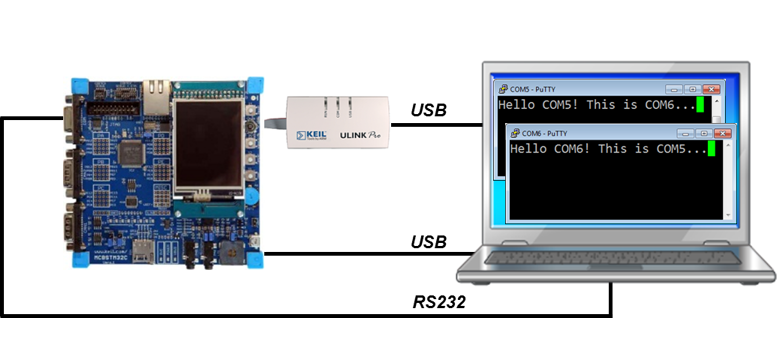
- Can you use a usb virtual port with ezusb serial#
- Can you use a usb virtual port with ezusb driver#
- Can you use a usb virtual port with ezusb windows 10#
- Can you use a usb virtual port with ezusb software#
- Can you use a usb virtual port with ezusb windows#
Can you use a usb virtual port with ezusb windows#
In order to save power, by default, Windows switches your USB controllers off when they’re not in use, and switches them back on again when they’re needed. Unfortunately, sometimes this approach doesn’t work as intended, and Windows fails to switch your USB controllers on again. Sometimes, this can be fixed quite simply:ġ) Unplug the power supply and charger plug from your laptopģ) Connect your USB device to the laptop againĤ) Plug the power supply back in Method 3: Check your power management settings If, for some reason, it fails to do this properly, the devices plugged into those USB ports may stop working. Your laptop’s power supply delivers power to your USB ports. Method 2: Check your power supply (laptop only) If it doesn’t, then you’ve isolated the problem! You just need to buy a replacement. To check if the USB device is faulty, simply unplug it (‘Eject’ it if it’s a USB storage device) and plug it into another computer.

So it’s best to rule that possibility out for sure before spending time on more complex troubleshooting. It’s certainly possible that your device just happened to die right at the same time that you upgraded Windows. If the USB device was working before you upgraded to Windows 10, it’s unlikely to be faulty. You may not need to try them all just start at the top of the list and work your way down.ĥ: Check your USB ports Method 1: Check if the device itself is faulty Note that there are 5 possible solutions here. Whether it’s a USB mouse, keyboard, pen drive, printer, or some other USB devices altogether, this guide should resolve your problem.
Can you use a usb virtual port with ezusb windows 10#
a standard USB COM port), and define your own protocol over that.If you find one of your USB devices on Windows 10 isn’t working, read on.
Can you use a usb virtual port with ezusb driver#
The second approach is to define your a custom USB protocol, and write a custom USB device driver which presents itself as multiple com ports to Windows.Ī third approach is to declare a single USB CDC port (i.e. Not all versions of Windows supports IADs. You can have multiple IADs, so there can be multiple logical functions. Each IAD declares a logical function within that USB device. The first approach is to use declare a USB composite device with interface association descriptors (IADs). Of course, all 4 chans cannot run 12MBd on FS USB, but high baud rates can allow the remote devices to finish sooner, They claim 15kv ESD on the USB, and No-Xtal needed, and up to 12MBd UART settings & 512 Byte FIFOs. *Addit : I see the Exar part has some interesting fine print, SiLabs have CP2105 = 2 UARTS - USB, based on their Fast 8051,Īnd they also have a CP2108 Quad UART-USB based on their ARM core.įT4232H which is a Quad-UART, with High Speed USBĬP2108 looks cheapest, but the FT4232H can run faster UARTs via the HS backbone, so it may depend on how much UART speed matters to you ? Not quite, looking at what others have done & and what cores they use :
Can you use a usb virtual port with ezusb software#
Is this a software or hardware dependent thing? So the answer is you can't get more than one virtual com port in Windows from one USB using AVR?Īt least one FTDI module had two virtual com ports with one USB connection (FT2232D: ). My goal would be to use as many hardware USARTs as possible. I am not familiar with the USB module coding, but I suspect it might use the high priority level interrupts on the Xmega, leaving you to use the mid level priority interrupts for the USARTS, and the low level interrupts for anything else.

One of the questions will be how much other work does the uC have to perform on the data being transferred in and out of the uC?

That said, 9600 isn't very fast, and the Xmega can run at 32 MHz, so I would expect you could do this, but I've not done so myself. One might watch for the Start Bit, (or use a Pin Change interrupt to synch on it, and then use a timer interrupt to read the incoming data stream, sampling at the mid-bit position, (for each bit, for each channel.). If you really want to use "virtual" comm ports, (software comm ports), then I would think the processor is going to spend "a lot" of time processing these. This means that there is minimal overload on the micro even when running many interrupt driven, ring buffered USARTS. The work is done by the hardware module, and the processor only has to spend a few clock cycles processing an interrupt and stuffing the incoming data into a ring buffer. One of the nice features of using a hardware USART is that it doesn't tie up the processor.
Can you use a usb virtual port with ezusb serial#
The Xmega128A4U has 5 Hardware USARTs, so clearly if you only need 4 or 5 serial comm's ports, using these would be a good approach, IF you don't need the I/O pins for other devices.


 0 kommentar(er)
0 kommentar(er)
